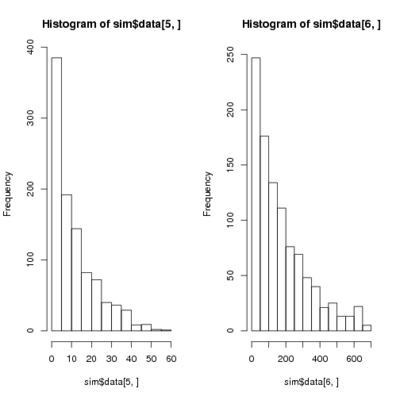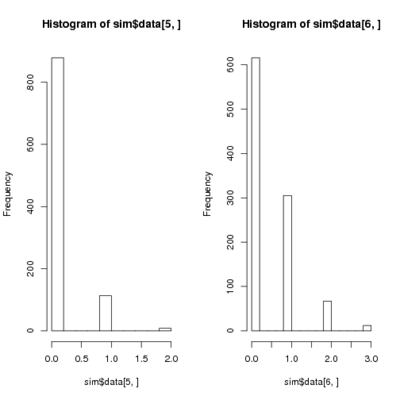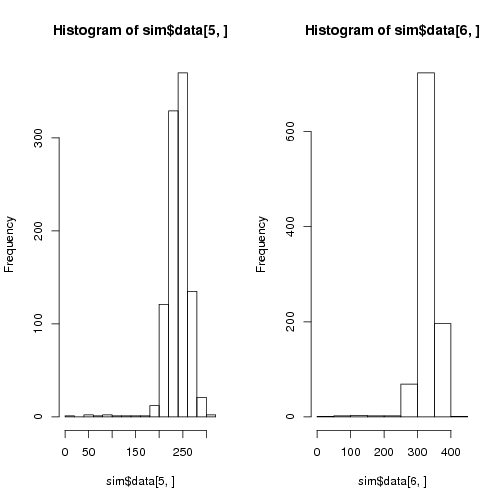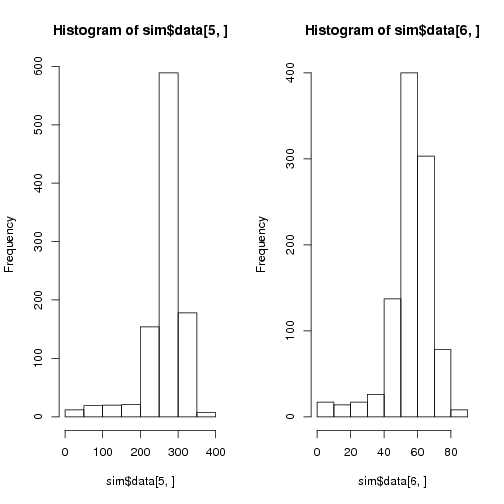Wide gap, flat landscape
- Waiting times on a flatter landscape: sigma_c ~ sigma_k. Waiting times are dominated by the number of times phase 3 collapses: the established invader in a dimorphic population (right panels). Collapse of phase 2: collapse of the dimorphism before third population can establish is much rarer (about an order of magnitude).


- from the run3 dataset, with parameters.
Narrower gap, steeper landscape
- with sigma_c << sigma_k, branching is easy, neither phase is particularly limiting, though single collapses from both phases are very common.


- from the run4 dataset.
Slower mutation, bigger steps
- Trying flat landscape with smaller mu, larger sigma_mu, see if phase 2 becomes limiting. (run5 dataset). Pars: mu = 5e-4, sigma_mu = .05, sigma_c2 = .8,
- Just finished running, very few achieved branching! Should repeat with narrower competition kernel.
- Mean number of failures from phase 2: 240, from phase 3: 330, so not order of magnitude different anymore but phase 3 still limiting.
- Very interesting, seems the stdev of failures is much smaller for both! (24, 30 respectively)

- Run6: as before, but mu=.0001, sigma_c2 = .3. Phase 2 is truly more limiting. A different mechanism to branching – rare large jump vs series of rapid small steps.
